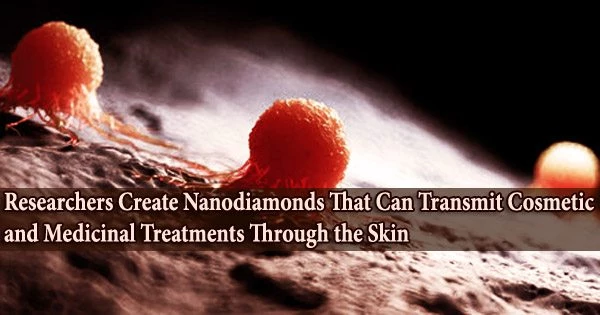Despite being one of the largest and most accessible organs in the body, science has yet to successfully penetrate the skin’s deep layers for medical and aesthetic purposes.
Although there are some treatments, such as nicotine patches used to stop smoking, this type of therapy is uncommon since the particles that can enter the skin must be no larger than 100 nanometers (one thousandth of a centimeter). Making useful instruments out of such minute particles is a difficult task.
It is difficult to pinpoint the precise location of the particles inside the body, which is important to make sure that they reach the specified target tissue because the particles are so minute and hard to see. Today, intrusive, frequently uncomfortable biopsies are used to gather this information.
Researchers at Israel’s Bar-Ilan University have come up with a fresh method for solving each of these difficulties. They created tiny (nanometric) diamond particles using a combination of nanotechnology and optical techniques that are so thin they can penetrate skin to offer medical and cosmetic treatments.
Additionally, they developed a risk-free, laser-based optical technique that quantifies nanodiamond penetration into different skin layers and establishes their location and concentration in bodily tissue without the use of an invasive procedure like a biopsy.
Researchers from the University’s Institute of Nanotechnology and Advanced Materials, in collaboration with the Kofkin Faculty of Engineering and the Department of Chemistry, have published this breakthrough in the scholarly journal ACS Nano.
This is a significant development in dermatology and in optical engineering. It could open the door to developing drugs applied through the skin alongside modern cosmetic preparations using advanced nanotechnology.
Professor Dror Fixler
Explosions inside a sealed container create nanodiamonds with a size of one millionth of a millimeter. In these circumstances, intense pressure and temperature cause the carbon atoms in explosives to fuse. The resultant nanodiamonds are small enough to enter cells and even tissue without causing damage.
Nanodiamonds and drug delivery
Artificial diamonds can deliver different medications to intended destinations, much like delivery trucks can, and their distance and placement may be controlled due to the nanodiamonds’ tiny size. Using nanoparticles to deliver drugs has previously been successful in earlier studies.
Additionally, Bar-Ilan University’s freshly created nanodiamonds have been shown to be efficient antioxidants. This characteristic guarantees that particles entering the body are both safe and therapeutic because it allows for the coating of drugs prior to insertion due to their chemical properties.
Tracking nanodiamonds through optics
An innovative discovery in and of itself, given that red wavelength lasers are typically used in human medical examinations and treatments, is that the research team’s optical method enables them to identify relative nanodiamond concentrations of particles in the different layers of skin (epidermis, dermis, and fat) through safe and non-invasive sensing based on a blue wavelength laser.
Patients are momentarily subjected to the blue laser beam in order to establish where they are in the skin and in what concentration. Through the use of an optical device and a specifically developed algorithm, treated tissue’s optical changes can be retrieved and compared to nearby, untreated tissue in a 3D image that resembles a photograph.
“This is a significant development in dermatology and in optical engineering,” says Prof. Dror Fixler, Director of the Institute of Nanotechnology and Advanced Materials at Bar-Ilan University and a member of the research team. “It could open the door to developing drugs applied through the skin alongside modern cosmetic preparations using advanced nanotechnology.”
Fixler’s research, assisted by researcher Channa Shapira and others, demonstrates the importance of optical innovation in clinical application.





